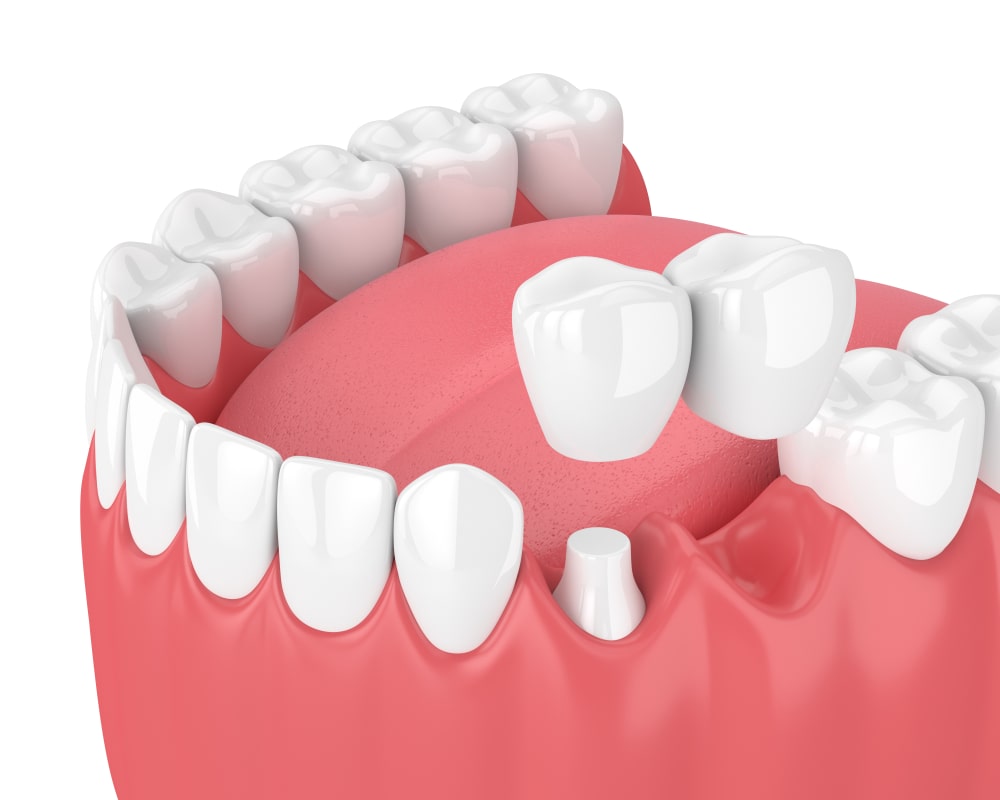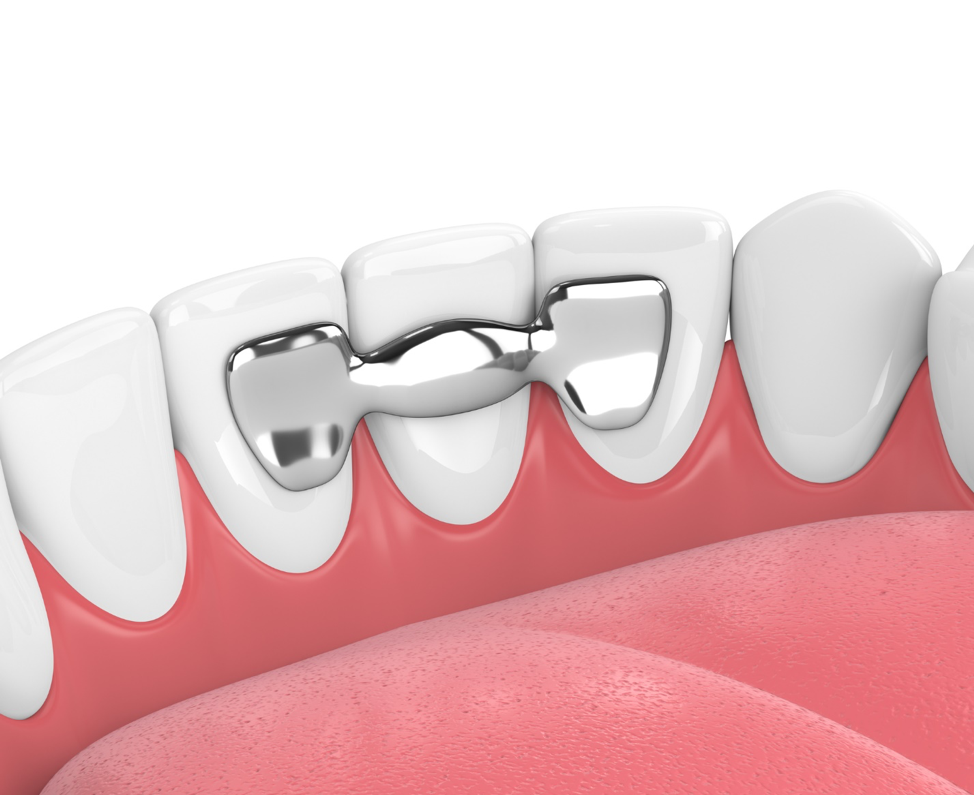What is a Dental Bridge
A dental bridge is a fixed restoration option for people with missing teeth. It literally bridges the gap by anchoring a false tooth, called a pontic, to the healthy teeth on either side of the space.
These healthy teeth, called abutment teeth, are fitted with crowns that support the pontic. The bridge itself can be crafted from various materials, including porcelain, metal, or a combination of both.
Dental bridges offer several advantages:
- They restore your ability to chew properly
- Improve your speech,
- Erevent surrounding teeth from shifting,
- Enhance the aesthetics of your smile by filling the gap
- Boosting confidence.





